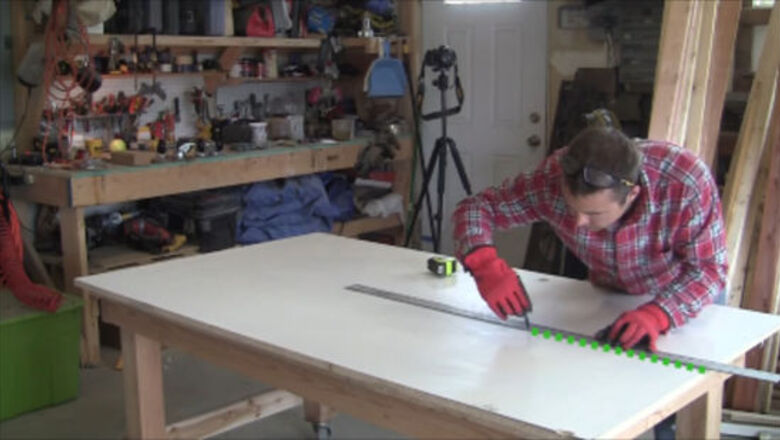
views
Making Your Form

Measure for the countertop you need. You want to start by measuring the area you need to cover with your countertop. Don't worry about cut-outs for things like sinks right now: just get the shape of the rectangular or L shaped piece that you'll need. Try not to do anything to big all at once, as this will be very difficult to place. If you can, break it down into smaller sections. Keep in mind that there is usually a 1" overhang from the edge of the cabinets. Make sure to add this into measurements for any sides not attached to the wall.
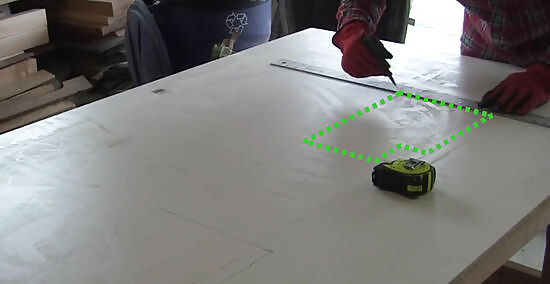
Measure for your cutouts, like a sink. If you need to have a cutout for the sink, measure or trace the shape that you need onto some paper or cardboard. Then, transfer that shape to some high density, firm foam (like what is used in flower arranging) and cut it out. This cardboard square will help your visualize the sink or other object and cut around it when preparing the countertop.
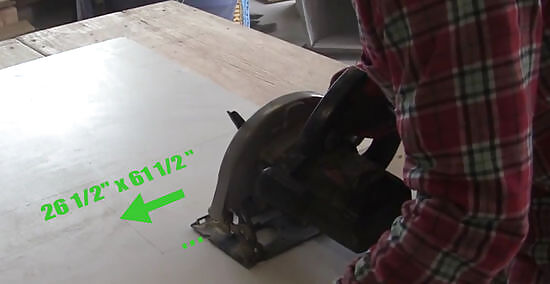
Cut the melamine base. Cut a base for your mold using the measurements that you took, but with 3/4" added all the way around. You can cut the melamine using a table saw or similar tool. For example, if making a countertop that is 25x60" big, cut a piece of melamine that is 26 1/2" x 61 1/2".
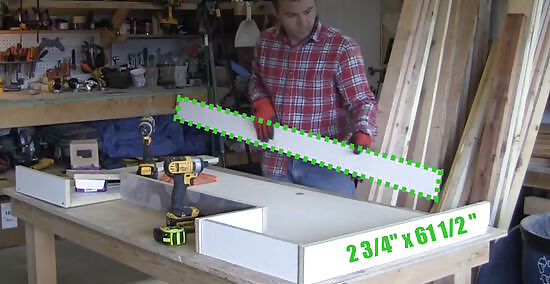
Cut the sides for your melamine, choosing your desired thickness. Cut the side pieces to the desired thickness of your countertop, plus 3/4" on both ends and one of the sides to adjust for construction. Adjust the measurements for either the short or long ends, depending on how you want the boards to overlap. How this is done doesn't matter, just as long as they make the shape of the base. For example, if you wanted 2" thick countertops, the pieces would be cut to 2 3/4" x 61 1/2" for the long sides and 2 3/4" x 26 1/2" for the short sides. We could then adjust the measurement of the short sides to 25" so that they can nest between the long side pieces. You could also go the opposite way, and adjust the long sides back down to 60". Either way, test out your measurements with a tape measure on the melamine base to make sure everything will fit snugly.

Attach the pieces together. Using basic butt joints, drill pilot holes and then screw the sides of the mold together. You can then attach the sides to the base in the same way. 1 1/4 inch dry wall screws should be more than strong enough.
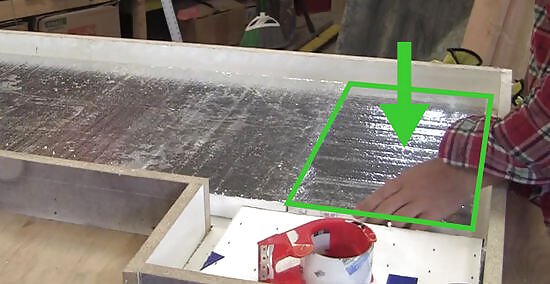
Add the cutouts. Using rubber cement or another strong, even-drying adhesive, glue the foam cutout for your sink to the location it will go for the counter. You need to make sure the foam is as least as high as your mold. When you pour the concrete in, the foam needs to prevent any concrete from getting into the sink area. If the sink will go at the edge of the counter, it might be better to simply build this into the mold, cutting it out ahead of time.
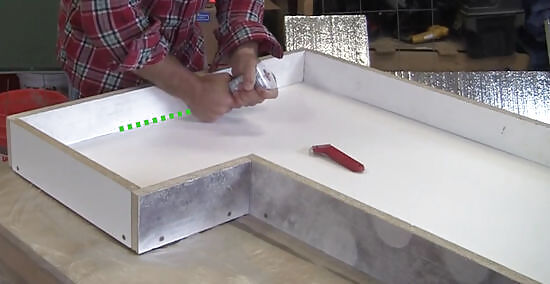
Tape and caulk the the edges of the mold. Tape around the inside seams of the wooden mold, leaving just a slight gap (about 1/8") between the two piece directly over the joints. You should then run a line of caulk along all the seams and form it to the joint using your finger. Allow it to dry and then peel off the tape. This will prevent any concrete from leaking out unattractively. Use paper towels to wipe up any excess as you work.
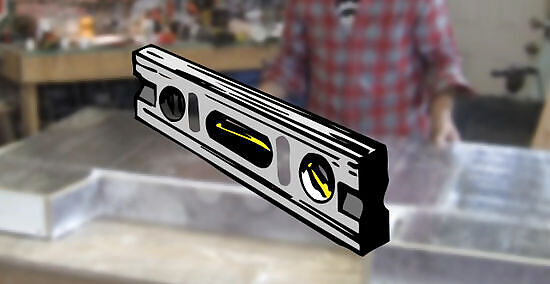
Check that the foam and mold are level and clean. Use a carpenter's level to make sure the top edge of the form is level all the way around. If needed, sand it down to make sure it is all nice and uniform. When done, clean the mold with a shop vac and a damp cloth. Let it dry before moving on.

Optional -- lower the final weight by adding more foam throughout the mold. This little trick greatly reduces the final weight, and the necessity for more concrete. Take some more foam and cut it to be only half the height of the mold. Then, leaving 1-2" between the walls and foam, glue down the foam. It will take up a lot of the space the concrete would have, but is much, much lighter. When done, caulk it down to the mold. Take up all the foam pieces together on both sides with packing tape, including the outside edges. Make sure you leave the gap around the edges -- you need to concrete around the entire perimeter.
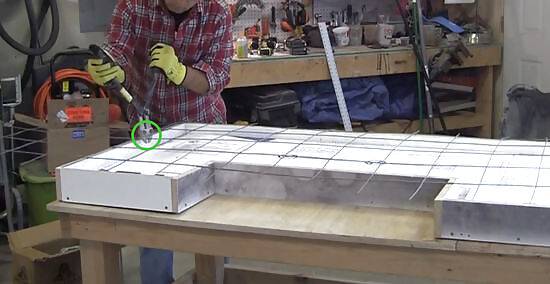
Cut and fit your steel re-enforcement wire into the concrete. This helps for stability and shaping. You may need to cut and bend it a bit to fit it snugly into the molding. You don't want to add it in now -- you just want to make sure it fits.
Pouring the Countertops
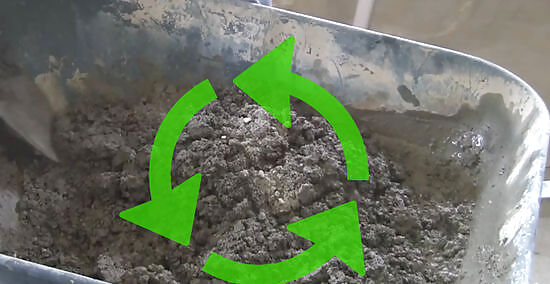
Mix your concrete. Use a mix for the color and additives that is especially designed for countertops or floors. This is important, as you'll want strengtheners and other filler materials to make your concrete function better for this purpose. You will also want to use a pre-mixed, high strength concrete. Your local home improvement store should be able to help you locate both of these products. Mix the concrete in a moving mixer, in order to get the right volume and consistency. These can be rented from your local hardware store. You want a roughly peanut butter-like consistency. Follow the manufacturer's instructions for mixing the concrete and additives. Generally, less water is used for high strength concrete than normal concrete.
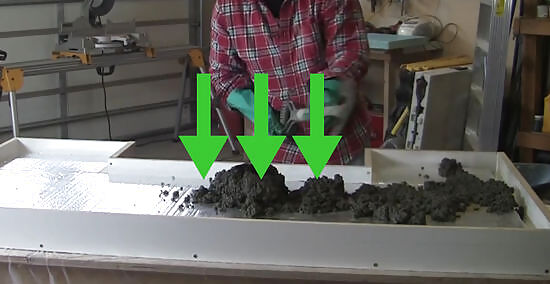
Scoop about half your concrete into the mold. Using a shovel or scoop, pour your concrete into the form until it reaches the top edge of the form all the way around. Use a trowel or paving tool to even out the top and push all of the concrete out to the sides as you work
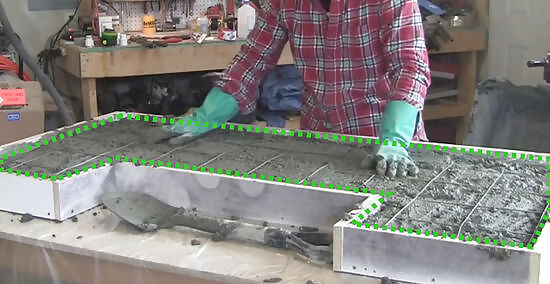
Add your steel re-enforcement over the first half of concrete. You can also add extra strength by cutting and placing a steel mesh in the wet concrete halfway through the pouring process, so that it is completely entombed in the material. This isn't completely necessary, but is important for preventing cracks and creating a countertop that will last a lifetime.
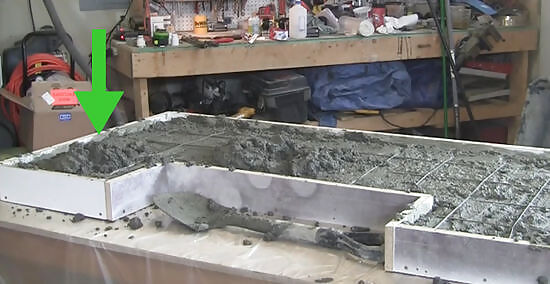
Continue adding the last half of concrete over the re-enforcement. Err on the side of having too much concrete in the form. You can always skim some off, but it is much harder to add in later.
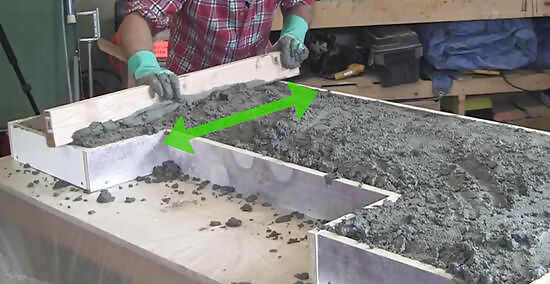
Screen the top of the form. Using the edge of a flat board, lay it across the top of the form on one end and then slide it back and forth as you move down the frame to the opposite end. This will take off any extra concrete and make sure the top is level. You can use the edge of 2x4, or speciality concrete working tools. Work the edge back and forth along the top, like you are leveling floor in a measuring cup, to distribute the concrete evenly. Take any excess concrete and use it to fill in any low spots. Extra concrete should be held onto for later, as it may help fill in spots.
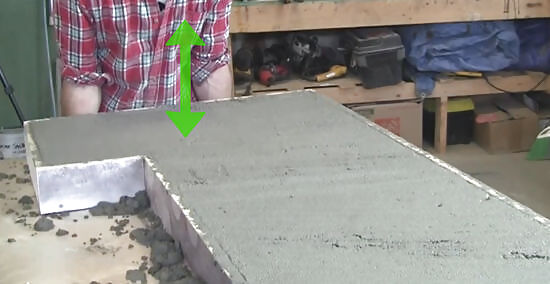
Vibrate the edges of the mold to release air bubbles. Vibrate the whole table your form is resting on if you can, but at a minimum gently vibrate the sides of the form to get rid of any bubbles. You can use a sander on a low setting, without any attachment, and run it along the entire edge of the form, for the easiest solution. Your goal is to get an nice, even top. Even just lifting and dropping the whole table 2-3" inches, bouncing it rapidly, is perfect. You can also use a rubber mallet, striking the sides of the mold and bottom of the table.
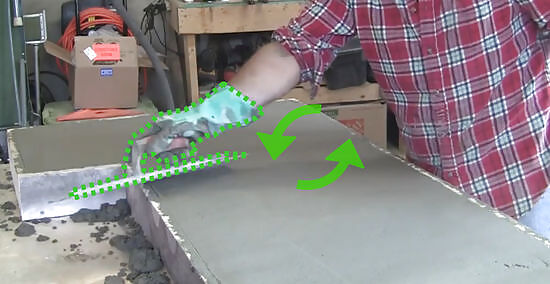
Use a float or trowel to smooth out the entire top of the concrete, and use and edging tool to bevel the entire edge. Smooth everything out, then create a nice, rounded edge around the entire mold. Then trowel out any imperfections created by the edging tool, and let it sit. Repeat this process again, especially the troweling, after 2-3 hours.
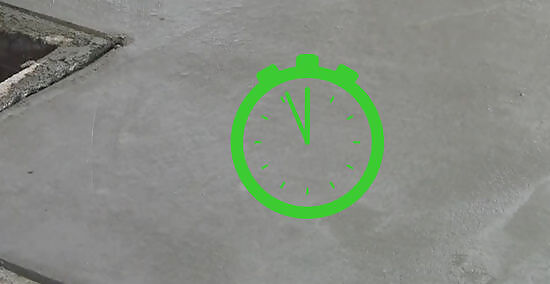
Allow the concrete to cure. Cover the concrete with plastic and then allow it to cure as long as instructed by the manufacturer. This could be anywhere from 1-2 days to a week. However, you don't want the concrete to completely dry. When you can press into it and only create a small dimple, you're ready to move forward.
Finishing Your Countertops

Release the forms when the top is firm, but still slightly pliable. Unscrew the sides of the form and gently pry the melamine off of the concrete. If the concrete starts to slump, put it back on. If not, use your trowel to smooth out the outside edge of the counter into a clean, even surface. If you need, a small spray of water makes the concrete a bit easier to work with. You won't need much. If a little concrete pulls off with the wall, you can trowel some of the excess concrete back on with a spritz of water.

Trowel over the top of the concrete as well, waiting until it is almost completely dry. This final troweling provides some smoothness and character to your countertop. It is not entirely necessary, but will lead to a prettier countertop.
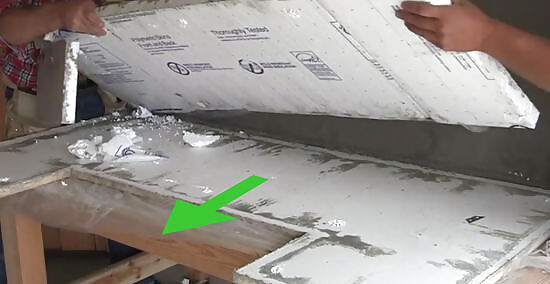
With a friend, lift the countertop and remove the mold and bottom. You need the bottom of the countertop to dry, too. Once you're sure it is dried enough that it doesn't slump (in which case you would still have the side walls on, get a friend to help you raise the top of the countertop. Rip out the foam and pull off the molding, exposing the bottom of the counter top. Don't rush this. Remember, the concrete should just barely indent under your finger. Let the countertop hang over the edge, at least slightly, to allow air underneath to dry.

Clean the countertop once it has completely dried. Put on some rubber gloves and then wipe down the countertop with a mixture of 10 parts water to 1 part muriatic acid to remove any remaining residue and prepare the material for sealing. Remove the excess acid with a squeegee.

Sand your countertops. Using a sander and increasingly high grit sandpaper (120, 180, 220), sand your countertop and the sides until it is completely smooth. Remove the dust with a cloth and some water.
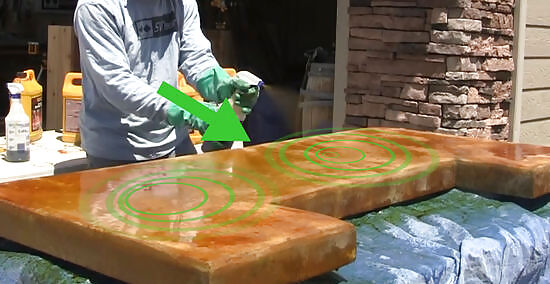
Paint or acid wash your concrete, if desired. If you want to color the concrete, add it after everything has dried. You can use any sort of coloring you want, as long as it is made for concrete.

Seal the countertop. Using a penetrative sealer, fold a rag as flat as possible and then saturate it in the sealer. Wipe this in long strokes, overlapping each stroke with the next, until the entire counter is covered. Allow to dry. This usually takes around 2 hours.
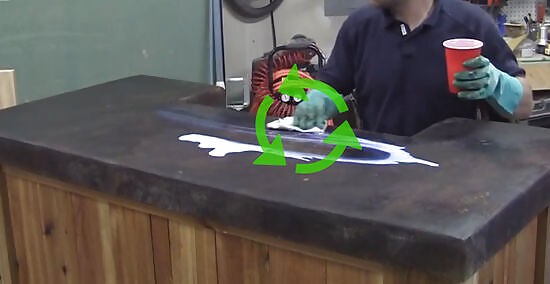
Wax and buff the countertop. Use a food safe wax and a buffer to finish the countertops. When they're shiny and the wax is absorbed, you're good to go!
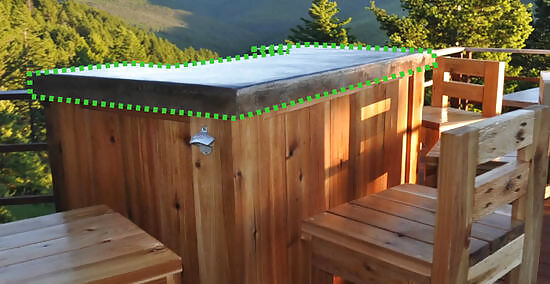
Install the countertop. Carefully place the countertops in their final location. If they are small enough not to stay in place using their own weight, use adhesives. Check for level and if they are not, use wood shims underneath to get the desired level.

















Comments
0 comment